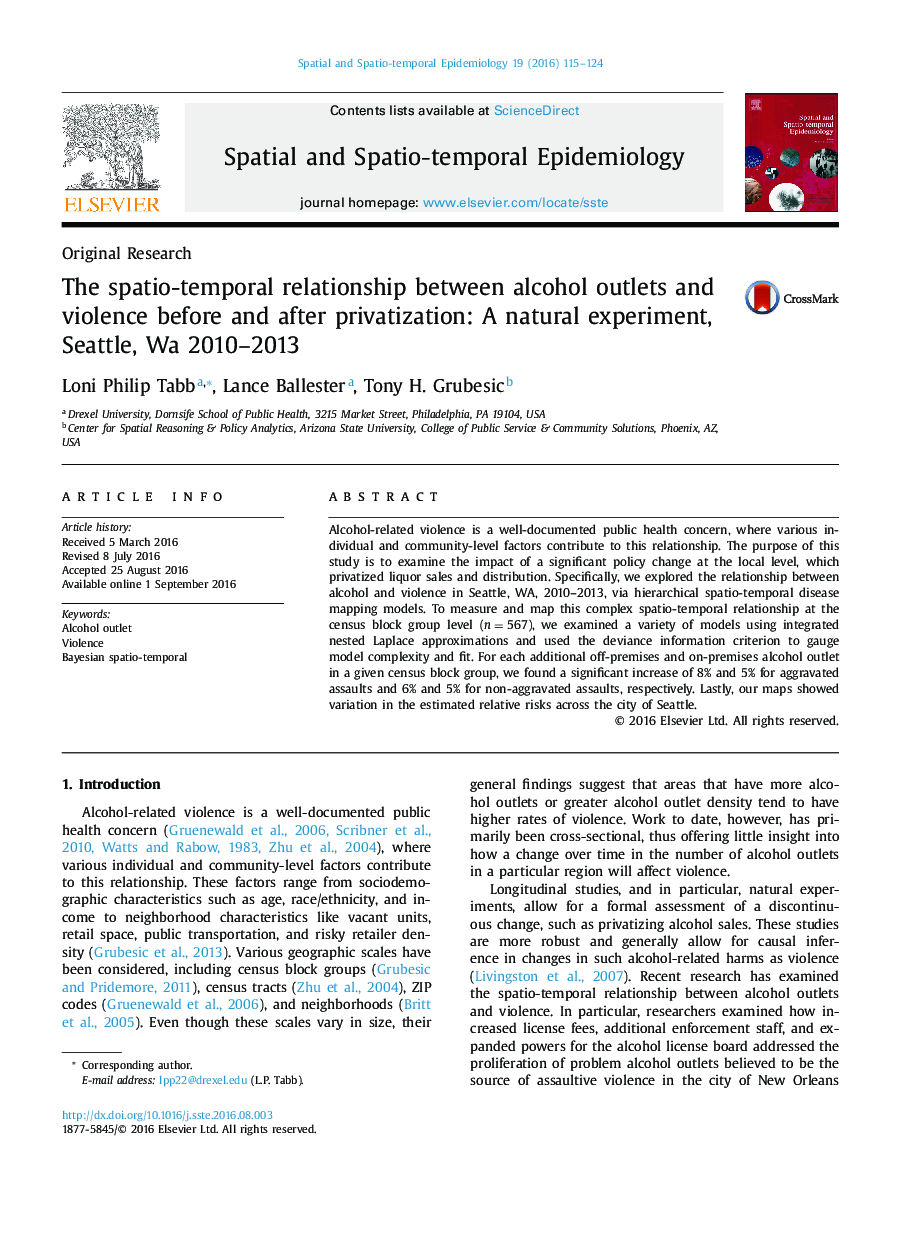| Article ID | Journal | Published Year | Pages | File Type |
|---|---|---|---|---|
| 5118960 | Spatial and Spatio-temporal Epidemiology | 2016 | 10 Pages |
•Areas with more alcohol outlets tended to have more violence, even after adjusting for various sociodemographic and neighborhood characteristics.•Assessed the spatio-temporal relationship between alcohol outlets and violence in Seattle, WA, 2010–2013 via integrated nested Laplace approximations.•The relative risk of violence varies from census block group to census block group.•Study allows for the casual assessment of the spatial relationship between alcohol availability and violence due to the additional temporal dimension of the study design, with an additional lens on the impact of an alcohol-related policy.•Study provides further evidence for considerations in future alcohol-related policies.
Alcohol-related violence is a well-documented public health concern, where various individual and community-level factors contribute to this relationship. The purpose of this study is to examine the impact of a significant policy change at the local level, which privatized liquor sales and distribution. Specifically, we explored the relationship between alcohol and violence in Seattle, WA, 2010–2013, via hierarchical spatio-temporal disease mapping models. To measure and map this complex spatio-temporal relationship at the census block group level (n=567n=567), we examined a variety of models using integrated nested Laplace approximations and used the deviance information criterion to gauge model complexity and fit. For each additional off-premises and on-premises alcohol outlet in a given census block group, we found a significant increase of 8% and 5% for aggravated assaults and 6% and 5% for non-aggravated assaults, respectively. Lastly, our maps showed variation in the estimated relative risks across the city of Seattle.
